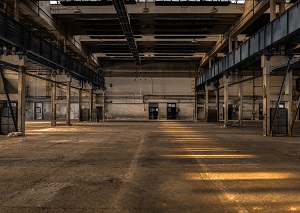The 3 Primary Mistakes in Air Management You are Probably Making

3 Keys to Effective Air and Energy Management

Punxsutawney Phil Predicted Early Spring – Is Your Industrial HVAC System Ready?
 When it comes to air management, there are three areas in which many businesses tend to make common (and costly) mistakes:
When it comes to air management, there are three areas in which many businesses tend to make common (and costly) mistakes:
- Air Replacement
- Air Pressure
- Air Circulation
The first step you must take in order to correct these mistakes is self-education: learning what each of these areas entails and what you can do to avoid mis-managing them. Indeed, as Einstein once said, “Any fool can know. The point is to understand.”
Today, we’d like to help you understand these three costly air management mistakes in greater depth. With this knowledge, you can then take concrete steps towards improving the performance of your operations, resulting in both cost savings and worker comfort. Ultimately, understanding how to avoid these three mistakes will help you to optimize your equipment for better energy usage and comfort management.
1. Air Replacement/Makeup Air
Makeup air, or compensating air, is the air outside of your facility that is introduced into the building in order to replace air that is exhausted through ventilation or combustion processes. The easiest way to understand this concept is to remember the last time you heard someone say (or if you have kids, the last time you said) not to leave the front door open because “you don’t want to heat the outside too!” However, for industrial air systems, constantly introducing replacement air into the facility is a necessity.
This is where managers tend to make mistakes: typically, when exhaust effectiveness is diminished, someone will simply add an exhaust fan without adding in any additional makeup air, thereby reducing the exhaust effectiveness further–and necessitating the addition of another fan. Ultimately, the fan solution is extremely wasteful and costly – and pretty much ineffective.
An energy efficient building will have makeup air equal to actual exhaust air requirements, which takes us to…
2. Air Pressure
When the pressure inside the building is greater than outside, it’s called positive pressure. When the reverse is true, it’s called negative pressure. According to Jerry Ludwig, Director of Engineering at Environmental Health & Engineering Inc., “the air pressure inside the building should be equal to or slightly positive to the air pressure outside the building. We see a lot of buildings that are negatively pressurized, which can cause a whole host of problems.” These problems include uncomfortable, fluctuating temperature environments, cold drafts, difficulty opening doors, hazy atmospheres, and elevated levels of carbon dioxide and other noxious chemicals.
Negative air pressure isn’t always a bad thing, of course, and depending on the type of internal environment, it can actually be beneficial. For example, consider the type of ventilation required for a restaurant environment. The kitchen must be negatively pressurized (relative to the dining room) in order to remove effluents from noxious cooking exhaust, prevent heat from traveling into the dining room, and stop unwanted odors from wafting into customer’s nostrils. On the other hand, the dining area must be positively pressurized relative to the kitchen, restrooms and outdoors. Again, the key here is balance.
Regular building audits that assess a building’s exhaust, intake and flow capacity are crucial to maintaining air pressure equilibrium. If you find that there is an issue of negative air pressure, adjust the flow of the exhaust and intake equipment, or consider adding more makeup air. The solution is often more simple than you may think.
3. Air Circulation
Air circulation is something that most people understand. The problem is that most people aren’t sure of how to create the best circulation for their facility, and the bigger the building is, and the more activity that is occurring within it, the more difficult it is to create the right flow of air. You need air circulation to encourage makeup air to reach all areas of the building while maintaining a positive air pressure. Because air travels the path of least resistance, often times ductwork can be eliminated by placing makeup air on one end of the building and exhaust on the other end, which facilitates air flow through the facility. It’s important to maintain a positive pressure within a building. If you don’t maintain positive air pressure, you will experience stratification, which causes uneven temperatures throughout the building and results in discomfort.
Things like shut doors and blocked off areas cut off circulation to some areas, but that is not the only problem. Large machines, dividers, and other typical parts of a manufacturing facility can be obstacles that make it difficult to keep the air circulating in a way that reaches all necessary areas.
Mechanical exhaust can help to keep air moving through areas that are otherwise blocked. Locating and reducing high velocity drafts around the facility’s perimeter helps maintain the desired air flow, too. Positive pressure and heat reclaiming equipment can be extremely efficient and effective ways of keeping the air clean in facilities.
By understanding these common air management mistakes, you can take active measures to optimize your HVAC equipment for better energy usage and create a more comfortable, pleasant building environment.




